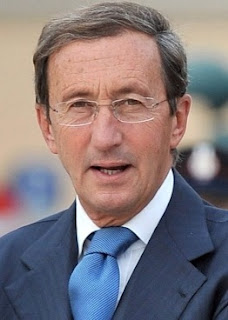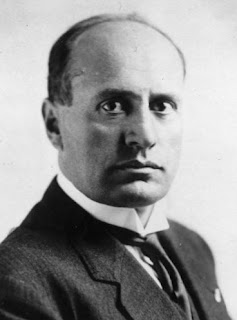Writer chronicled the story of Fascism in Italy
 |
| Pino Rauti was a prominent figure in far-right Italian politics for 64 years |
Rauti was to become a leading figure on the far right of Italian politics from 1948 until his death in 2012.
As a young man he had volunteered for the Guardia Nazionale Repubblicana of Benito Mussolini’s Italian Social Republic and he then went on to join the Spanish Foreign Legion.
After his return to Italy, Rauti joined the post-fascist Italian Social Movement (MSI). He became associated with Julius Evola, a leading fascist philosopher, and became editor of his journal, Imperium.
Rauti joined the staff of the Rome-based daily Il Tempo in 1953 and later became the Italian correspondent for the Aginter Press, a fake press agency set up in Portugal in 1966 to combat communism.
In 1954 he established his own group within MSI, the Ordine Nuovo, but he became disillusioned with MSI and his group separated from the party two years later.
 |
| Rauti worked as a journalist on the Rome newspaper Il Tempo |
There were other claims linking him with terrorist activities but he was never convicted of any offences.
Rauti returned to MSI and was elected to the Chamber of Deputies in 1972. In the 1980s, he became a leading figure in the European Parliament.
He went up against Gianfranco Fini for leadership of MSI in 1987 but Fini’s more moderate policies won him the biggest share of the vote. In 1990, he did replace Fini as leader, but the party’s performance in the next regional elections was the worst in its history and he was removed from the leadership in 1991, with Fini taking charge again.
 |
| Pino Rauti with Gianfranco Fini (left), whom he replaced as leader of the MSI party in 1990 |
Between 1966 and 1990, Rauti wrote a number of books about the history of Fascism and the policies of Mussolini.
Rauti died in Rome in November 2012, aged 85.
His daughter, Isabella, who also became a journalist, is now a member of Fratelli Italia, a conservative nationalist party formed by former members of Berlusconi’s People of Freedom party. She was elected as Senator for Mantua earlier this year. She is the ex-wife of a former Mayor of Rome, Gianni Alemanno.
 |
| A view over the rooftops of Cardinale in Calabria |
Cardinale in Calabria, where Pino Rauti was born, is a comune in the province of Catanzaro, the capital city of the region. Cardinale was proved to be a Neolithic site in the 19th century, when work was being carried out to reinforce an old iron bridge and axes made from stone were found, establishing the presence of man there as far back as the stone age. These axes can now be seen in the Archaeological Museum in Crotone.
 |
| The Palazzo Montecitorio in Rome, seat of the Chamber of Deputies |
The Camera dei Deputati - the Chamber of Deputies - is one of Italy’s houses of parliament, the other being the Senate of the Republic. The Camera dei Deputati meets at Palazzo Montecitorio in Rome, a palace originally designed by Gian Lorenzo Bernini and completed by Carlo Fontana in 1697, which is to the north of the Pantheon.
More reading:
How Giorgio Almirante tried to make MSI acceptable in mainstream Italian politics
Fini's move away from Fascism
The Piazza Fontana bombing
Also on this day:
1877: The birth of Giuseppe Volpi, founder of the Venice Film Festival
1893: The birth of Giuseppe Curreri, better known as the boxer Johnny Dundee
1907: The birth of Luigi Beccali, winner of Italy's first track gold at the Olympics
Home












